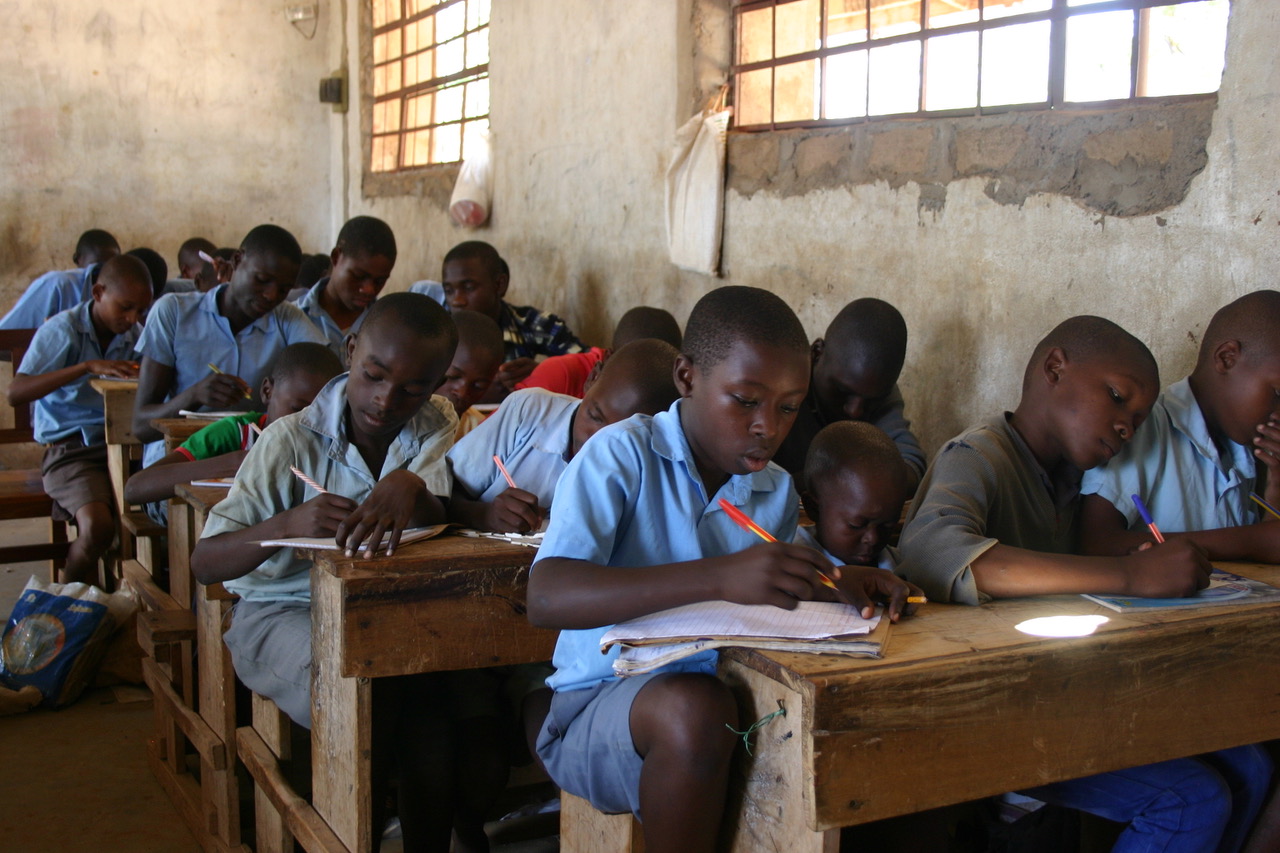Changing Kenya’s Landscape for Wildlife and Jobseekers
Changing Kenya’s Landscape for Wildlife and Jobseekers
Published in the The Opinion Pages on NY Times
By Amy Yee
JUNE 8, 2016 RUKINGA SANCTUARY, Kenya — Twenty years ago, this wildlife corridor in southern Kenya was in jeopardy. A scarcity of jobs in this impoverished, arid landscape meant people were hunting wild giraffe and antelope for meat, and chopping down trees to make charcoal. With fewer trees, desertification loomed. Water was so precious that local cattle herders lit fires at water holes to keep giraffes and zebras from drinking.
The animals had less vegetation to eat and less forest cover. Cutting down trees combined with poaching decimated wildlife in this 500,000-acre swath of the Kasigau migration corridor, which bisects Tsavo, Kenya’s largest national park. Tsavo, roughly the size of Wales, is home to half the country’s estimated 25,000 elephants.
Mercy Ngaruiya, known as Mama Mercy, is a community leader in the village of Itinyi. “People used to come with buckets of meat,” she said. “Everyone was killing animals. People were cutting trees for charcoal. They said, ‘What else are we going to do for money?’”
Against the odds, things have changed. Illegal tree cutting and poaching have fallen significantly. Previously, rangers from Wildlife Works, the local conservation group that initiated the shift, would find 8,000 wire snares in a year. Last year they found fewer than 300.
In 1998 there were no elephants on the 75,000 acres of Rukinga Sanctuary where Wildlife Works is based, said Rob Dodson, vice president of African operations. Now wildlife has returned. One recent evening, a herd of elephants, including babies, gathered at a water hole during a tranquil sunset. As many as 2,000 elephants live in the corridor, depending on the season; so do zebra, giraffe, buffalo, warthogs and several kinds of antelope, from slender dik-diks to impala. Lions had vanished from the area; now there are about 40, including two males seen lounging by a water hole on a hot Friday afternoon.
Illegal activities haven’t been wiped out. In January, seven elephants were poached for ivory. Every week rangers catch people burning trees to produce charcoal. But forest and wildlife in the Kasigau Corridor have been visibly revitalized by conservation efforts. And poaching has dropped. In the last few years, Wildlife Works hired more unarmed local rangers to supplement the Kenyan Wildlife Service, and in 2014 Kenya toughened its poaching laws. Seventy-six elephants were killed for ivory in the area in 2012, in contrast to 21 last year.
The key to preserving wildlife here is human relationships. Impoverished locals need alternatives to poaching and burning. So Wildlife Works has created hundreds of new jobs, including increasing the number of its rangers sevenfold to 85 in the past few years. (Many are former charcoal burners and poachers themselves.) Critically, this expansion won support for conservation from local elders and villagers, and the organization is now their county’s third-largest employer.
This community development work got a much-needed financial lifeline when Wildlife Works started the world’s first REDD+ project in 2011. REDD+, which stands for “reducing emissions from deforestation and forest degradation,” is an international system to combat climate change by preserving forests. It essentially pays communities in poor countries not to cut down trees.
Three United Nations agencies laid the groundwork for REDD+ in 2008. Gas-guzzling cars are commonly associated with global warming. But deforestation — cutting down trees and releasing the carbon stored in them — contributes 17 percent of the world’s greenhouse gases, more than the global transportation industry.
Preserving this swath of forest in the Kasigau Corridor avoids emitting more than 1.2 million tons of carbon dioxide per year for the next 30 years.
Since 2011, Wildlife Works has sold carbon credits and earned millions of dollars shared by landowners, investors, Wildlife Works and the local community. Money for the community finances schools, scholarships, water pipes, reservoirs and other public works that serve 150,000 people. The support was critical for getting the local community to support conservation.
“Now if someone cuts down trees or kills animals, people will report them,” said Mama Mercy.
REDD+ was controversial when it introduced nearly a decade ago. Critics feared fraud, and that the developed world would use carbon credits as an excuse to keep burning fossil fuels instead of curbing them. Supporters said poor countries needed financial incentives to preserve forests rather than cutting them down for fuel, farming and grazing.
At first, locals were also skeptical. Mama Mercy recalled that when people first heard about REDD+ they said, “‘How do we get money from trees? The air? These people are cheating us.’ It was really complicated.”
Educating locals about REDD+ and getting them on board was essential, because REDD+ uses international social auditors to enforce a requirement for informed consent from communities.
From 2009 to 2011, Wildlife Works’ team of local Kenyans met with about 60 elders, chiefs and heads of community councils to explain how the complex project works.
“They thought people were coming to get their land,” said Pascal Kizaka, a retired local chief. “We had to go and talk to them and preach. It took a year and a half to make the people understand.”
Although several tribes live in the area, Swahili is commonly spoken, so language was not a hurdle. Local leaders eventually gave consent to sell carbon credits on behalf of the community.
“People were so desperate,” said Dodson, of Wildife Works. “They had nothing to lose. They said, ‘It sounds mad, but let’s give it a go.’”
The forest was assessed by teams that measured trees in 480 sample plots across Kasigau Corridor. Independent environmental consultants from the United States used analytical software involving 60 algorithms to determine the amount of carbon in the forest.
Results were verified by the environmental audit firms Verified Carbon Standard and Climate, Community and Biodiversity Alliance, both based in Washington. The latter’s social audit includes weeks of meeting with local councils and questioning them independently.

In the early days, critics feared that “carbon credit cowboys” would displace or exploit locals and pocket profits. But setting up and verifying REDD+ is too complicated, expensive and stringent for speculators to make easy money. Rolling out REDD+ cost Wildlife Works about $4 million, each audit costs about $70,000, and verification requires evidence that REDD+ has benefited the community and environment.
The biggest pitfall is managing a multiparty project and building consensus among many community councils. “It’s easy to fail an audit. Getting back on your feet if a project fails is tough,” said Dodson. “Organizationally, it is fraught with danger.”
When Wildlife Works’ REDD+ project was verified, credits were sold on Markit, a London-based financial trading platform. The companies and other organizations that have purchased credits to offset their carbon emissions or fulfill corporate social responsibility policies have included Barclays, BNP Paribas, Allianz, the French postal service La Poste, and Kering, the holding company for Gucci, Saint Laurent and other luxury brands.
Wildlife Works sold $3 million worth of carbon credits in 2012, $2.5 million worth in 2013, and more than $5 million in 2014.
Carbon credit revenues are divided up with one-third going to landowners, roughly another third to Wildlife Works’ projects in Kenya, and the rest divided among the community and Wildlife Works in the United States, including its investors.
Community councils most commonly decide to use their shares for clean water projects or schools.
“People used to go long distances to get water, six kilometers or more,” said 24-year-old Zahira Kastoka, who grew up in Itinyi. Now there are water storage tanks near her home.
“REDD has changed things in so many ways,” she said. Kastoka got a high school scholarship through Wildlife Works, where she now works as an office administrator. Without the grant, her single mother could not have afforded school fees; Kastoka’s older sister had to drop out after fourth grade.
In 1998, few local youths were enrolled in college or in other tertiary institutions; now hundreds are. Over the years, more than 3,200 students have been awarded some $260,000 in high school and higher education scholarships.
For example, Mwolo Muasa, who grew up near Wildlife Works, had to drop out of school after his mother died when he was 10. But a few years later, he got a Wildlife Works scholarship, without which, he says, “I would have ended up a street kid.” Now 29, he helps lead Wildlife Works’ forest plot sampling, having studied environmental science at Kenyatta University in Nairobi.
Carbon credits have also financed precious new jobs. Before REDD, Wildlife Works had 65 employees in 2010. Now it has more than 300 who work in a small garment workshop, greenhouse and tourist lodge and as rangers, mechanics and office staff members. Before carbon credits there were 12 rangers hired from local villages; now the 85-strong force patrols a much larger area.
Wildlife Works was founded in 1997 by Mike Korchinsky, a California-based entrepreneur. While on vacation to Kenya that year, he noticed armed guards aggressively separating wildlife and local people. To create jobs and support the community, he established Rukinga Sanctuary and set up a tourist lodge and clothing workshop with a few employees. Keeping the businesses afloat was difficult.
In 2009, Korchinsky read a magazine article about REDD+ and wondered if Wildlife Works could sell carbon credits. At the time, there was no method with which to measure the carbon in Kasigau’s shrubby drylands forest. So Wildlife Works hired independent environmental consultants to design one.
One challenge today is planning for the future and managing expectations if carbon credit sales slump. In 2015, sales of Wildlife Works’ carbon credits fell to about half that of the previous year. Hesitant buyers were awaiting the outcome of the United Nations’ climate change summit meeting in December.
As a result, there were fewer scholarships. “Some people had to drop out of school,” said Mama Mercy. “Some girls married early. Parents want to educate children but there’s no work.”
“Last year was difficult,” she continued. “We hope this year won’t be the same.”
REDD+ agreements span only 30 years, so it’s uncertain what will happen when the contract expires. Dodson hopes that by then there will be enough economic development and jobs to sustain the community and preserve the forest and wildlife.
Ivo Mulder, the REDD+ green economy adviser for the United Nations Environment Program, said large-scale national initiatives that span entire counties or provinces and better control deforestation are a model for the future.
Worldwide, there are many REDD+ projects. However, the carbon credit market is limited and there are not enough buyers driven by corporate social responsibility. An oversupply of voluntary credits “reduces prices and makes it difficult to make REDD+ projects financially viable,” said Mulder.
Selling carbon credits from large government-backed REDD+ projects to other governments can make a bigger dent in combating global deforestation, though they are complicated to set up.
Nevertheless, the market for carbon credits could grow after 2020, when countries that signed the climate agreement in Paris last December must start reducing emissions. That pact recognizes REDD+ as one way to do that.
Back on the ground in the Kasigau Corridor, this environmental framework has already changed the landscape for flora, fauna and humans alike.
Kizaka, the retired local chief, recalled that big trees sheltering wildlife and cattle were being destroyed every day for charcoal. But now, he said: “If we show you photos before the carbon project and the present situation, the vegetation has changed. It has blossomed.”
From beneath the acacias in the Kenyan bush, one can still see the forest for the trees.
Amy Yee (@amyyeewrites), is a former correspondent for The Financial Times who has written for The New York Times, The Economist, The Wall Street Journal and NPR.
© 2016 The New York Times Company



